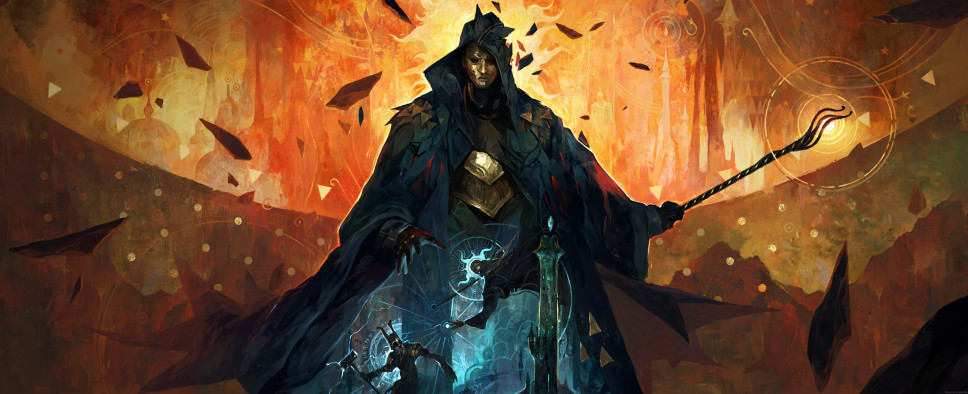SpellForce: Conquest of Eo Review
-
Category: ReviewsHits: 20054

Article Index
Introduction
Released back in 2003 hot on the heels of WarCraft III, SpellForce: The Order of Dawn was following what was supposed to become this big trend of combining the RPG and RTS genres. Far from a mere clone, the original SpellForce tipped the design scales closer to the RPG side of things, offering entire sections that played like a more traditional action-RPG in a fantasy setting that gladly embraced all the cheesy clichés.
The game was followed by several expansions and a proper sequel that had its own share of post-launch content. Afterward, the series laid dormant until THQ Nordic and Grimlore Games resurrected it in late 2017 with SpellForce III. The new entry experimented with a more grounded tone and acted as a prequel to the first SpellForce.
But seeing how, unlike in the early 2000s, it's the turn-based games that get people going these days, THQ Nordic has apparently decided to hedge their bets. Enter Owned by Gravity and SpellForce: Conquest of Eo - a turn-based take on the long-running series.
Set after the events of SpellForce III but prior to the original SpellForce, Conquest of Eo is in effect a sequel to the prequel taking place after The Circle of Mages was established, but before they managed to shatter the world into loosely connected bits, and chainmail bikini was agreed upon as the requisite uniform for the resident female warriors.
A Wizard's Tower Has a Knob on the End
In Conquest of Eo, you'll be playing as an ambitious young mage whose master ran afoul of The Circle and ended up getting destroyed for meddling with powers beyond the ken of your common spell slinger.
Upon learning of this development, you take it upon yourself to discover what it was that got your master in trouble, and pick up where he left off. Because naturally, where a powerful mage with an army of apprentices and a grand old tower fails, a neophyte with the keys to a pile of rubble is simply destined to succeed.
But before you set out on your quest for knowledge and power, you will first need to decide just what kind of wizard you are. The game offers us three presets here - an Alchemist, a Necromancer, and an Artificer. These, for lack of a better word, classes determine your approach to crafting and the schools of magic available to you. You're also free to mix and match these and make your own custom preset.
Now, some of you may already be planning a hasty retreat on account of crafting being positioned as such a prominent thing during character creation. Rest assured, here it's not some superfluous system that exists purely to annoy you with heaps of pointless busywork, but an integral part of the whole experience that determines your entire playstyle.
The game is set up in such a way that the regular units you'll be recruiting from towns, assorted settlements, and through random events won't generally cut it. You'll need something extra to get ahead. And crafting will help you do just that.
Alchemists are a nightmare for all those suffering from the too-good-to-use syndrome. They distill various plants, ores, and other reagents down to their basic essences and then use those to brew potions ranging from simple healing rations to flasks housing elemental summons, mind-control elixirs, and bombs capable of wiping out half an army in one good throw. Properly brewing and using these potions can turn hopeless defeats into easy victories.
Necromancers, on the other hand, utilize essences and the souls of their fallen enemies to bolster their ranks with the undead. These lifeless units are cheap, numerous, and powerful, but they don't regenerate health, forcing you to either use them as expendable fodder or go to great lengths to keep them operational.
Artificers mine ores in order to craft glyphs for their units and artifacts for their heroes, resulting in smaller armies that can punch way above their weight class. But on the flip side, losing a single unit can be a mighty blow to their entire strategy. The glyphs you can craft range from simple, but very noticeable, attribute boosts to entirely new abilities that are much stronger than any skill you can develop naturally.

